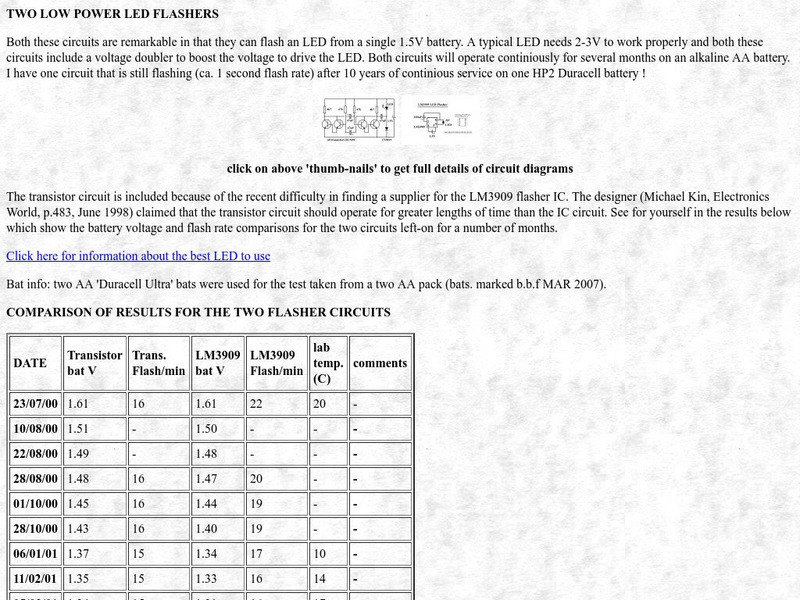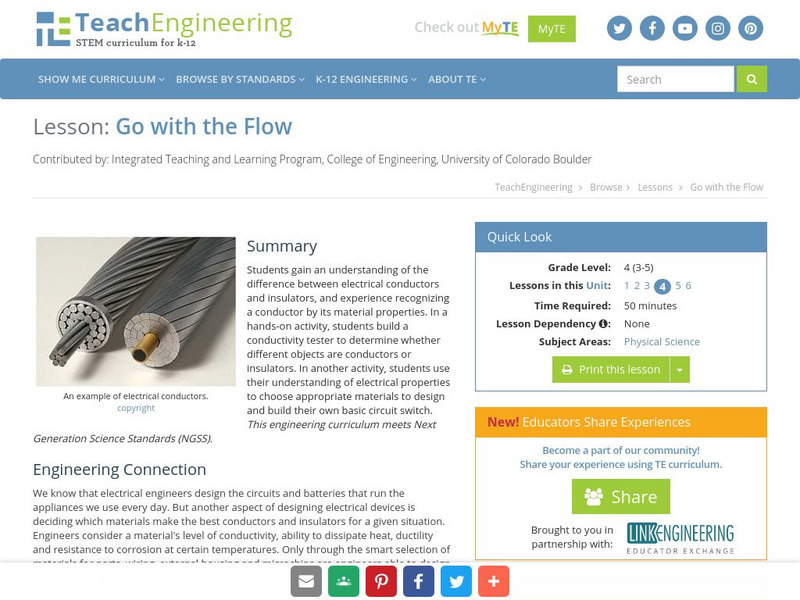Hi, what do you want to do?
TeachEngineering
Teach Engineering: Lights On!
Students in this activity will build simple circuits using a battery, wires, and light bulbs. This activity allows students to examine how electricity is conducted through a light bulb using a battery as a power source. Students will...
TeachEngineering
Teach Engineering: The Path of Electrons
Students engage in an interactive "hot potato" demonstration to gain an appreciation for the flow of electrons through a circuit. Students role play the different parts of a simple circuit and send small items representing electrons...
Alabama Learning Exchange
Alex: Wired for Learning
As part of a unit on electrical circuits, young scholars will work in collaborative groups to create a video of how to construct parallel and series circuits. This lesson plan was created as a result of the Girls Engaged in Math and...
CK-12 Foundation
Ck 12: Physics Simulation: Dollhouse
[Free Registration/Login Required] Learn about the analysis of parallel circuits in the context of a realistic household circuit using our interactive simulation. A PDF worksheet and a video tutorial are also available. [3:24]
Creative Science Centre
Creative Science Centre: Two Low Power Led Flashers
Explains the design of two circuits that can flash an LED from a single 1.5V battery. A typical LED needs 2-3V to work properly and both these circuits include a voltage doubler to boost the voltage to drive the LED. Both circuits will...
TeachEngineering
Teach Engineering: Go With the Flow
Learners gain an understanding of the difference between electrical conductors and insulators, and experience recognizing a conductor by its material properties. In a hands-on activity, students build a conductivity tester to determine...
TeachEngineering
Teach Engineering: Bulbs & Batteries in a Row
Everyday we are surrounded by circuits that use "in parallel" and "in series" circuitry. Complicated circuits designed by engineers are composed of many simpler parallel and series circuits. During this activity, students build a simple...
TeachEngineering
Teach Engineering: Get Charged!
Students are introduced to the idea of electrical energy. They learn about the relationships between charge, voltage, current and resistance. They discover that electrical energy is the form of energy that powers most of their household...
TeachEngineering
Teach Engineering: Ohm's Law 2
This extension to the Ohm's Law I activity, students will observe just how much time it takes to use up the "juice" in a battery, and if it is better to use batteries in series or parallel.
Concord Consortium
Mobile Inquiry Technology: Decaying Batteries
This investigation has students investigating and measuring the decay of batteries as their electric charges are used up in circuits.
Science and Mathematics Initiative for Learning Enhancement (SMILE)
Smile: Electron Current Flow
A teacher lesson plan which could be easily converted into an idea for a student project or presentation. This page describes an activity in which the water-electricity analogy is used to investigate the relationship between current,...
CK-12 Foundation
Ck 12: Interactive Physics for High School
This digital textbook covers core physics concepts and includes interactive features, real world examples, videos, and study guides.
CK-12 Foundation
Ck 12: Physics Simulation: Touch Screen
[Free Registration/Login Required] Learn about how capacitances add up in series and parallel by exploring the physics behind a touch-screen device using this interactive simulation. A PDF worksheet and a video tutorial are also...
ClassFlow
Class Flow: Changing Circuits
[Free Registration/Login Required] The teacher will use this lesson plan flipchart to review circuits. This unit consolidates Children's knowledge of materials which are electrical conductors, extends understanding of ways in which the...
Other
Alternating Current Series Circuit
This site outlines a lab dealing with Alternating Current Series Circuit. It includes graphs and formulas, and a list of questions associated with the lab.
Science Buddies
Science Buddies: Waste Not, Want Not: Use the Microbial Fuel Cell to Create Elec
Gross. What is that in the toilet? But maybe it's not just gross. Did you know there are bacteria that digest organic waste and create electrons? What if there was a way to collect those electrons to power a circuit? In this science fair...
National High Magnetic Field Laboratory
Magnet Academy: James Joule
James Prescott Joule experimented with engines, electricity and heat throughout his life. Joule's findings resulted in his development of the mechanical theory of heat and Joule's law, which quantitatively describes the rate at which...
Georgia State University
Georgia State University: Hyper Physics: Resistor Combinations
At this site from Georgia State University parallel and series connections of resistors are explained and illustrated. Equations for computing the overal voltage, current, and resistance of such circuits are given and explained.
SRI International
Performance Assessment Links in Science: Mystery Card 3
Straightforward introduction to electrical circuits using minimal materials and time. Students learn about the basics of electrical circuits by experimenting with "mystery cards" -- index cards with hidden aluminum foil used to conduct...
Discovery Education
Discovery Education: Earth's Energy
A hands-on lesson for helping students understand simple circuits, series circuits, and parallel circuits, and the differences between the three.
Georgia State University
Georgia State University: Hyper Physics: Conservation of Energy as a Fundamental Principle
See how this principle translates in to fluids and the Bernoulli equation as well as into electric circuits and the voltage law and finally into heat and thermodynamics through the first law of thermodynamics.
TeachEngineering
Teach Engineering: Electrocardiograph Building
This activity will build upon the concepts taught in the lesson The Strongest Pump of All. The activity will pull together the concepts of bioelectricity, electrical circuits, and biology. It will allow the students the opportunity to...
University of Colorado
University of Colorado: Ph Et Interactive Simulations: Capacitor Lab
Explore how a capacitor works! Change the size of the plates and add a dielectric to see how it affects capacitance. Change the voltage and see charges built up on the plates. Shows the electric field in the capacitor. Measure voltage...
Princeton University
Princeton University: Joseph Henry
A really fine and complete biography, quite lengthy. Some emphasis placed on his time at Princeton. A great deal of detail can be found here. Link here to the Joseph Henry House.

























